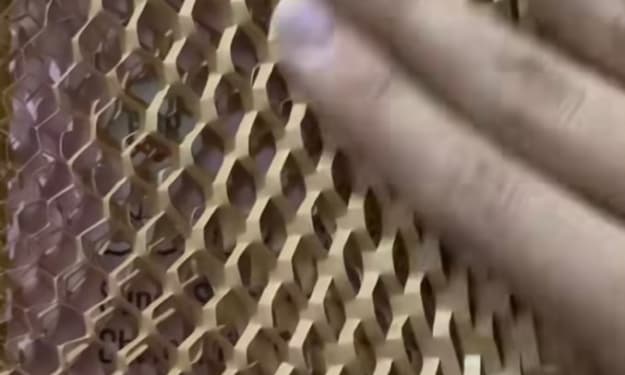Tell Me, Seriously, How do you Recycle your Food Garbage and Packaging?
In this article, we will discuss each of these methods in detail and provide tips for implementing them in your own home.

Recycling food waste and packaging is crucial for reducing our environmental impact and managing our waste streams more effectively. There are several methods for recycling food waste and packaging, including composting, anaerobic digestion, and recycling through municipal waste management programs. In this article, we will discuss each of these methods in detail and provide tips for implementing them in your own home.
Composting
Composting is a natural process that involves the breakdown of organic materials, such as food scraps, yard waste, and paper products, into a nutrient-rich soil amendment called compost. Composting is an easy and effective way to recycle food waste and packaging, as it can be done at home with minimal equipment.
To get started with composting, you will need a compost bin or pile, which can be made from a variety of materials, including wood, plastic, and wire mesh. The bin should be placed in a convenient location, such as in your backyard or on your balcony, and should be filled with a mixture of food scraps, yard waste, and shredded paper or cardboard.
When adding food scraps to your compost bin, it is important to avoid adding meat, dairy products, and oily or greasy foods, as these can attract pests and slow down the composting process. Instead, stick to adding fruit and vegetable scraps, eggshells, coffee grounds, and tea bags.
To speed up the composting process, you can also add a compost accelerator, which is a mix of microorganisms and organic matter that helps to break down the compost more quickly. Compost accelerators can be purchased at garden centers or online, or you can make your own by mixing grass clippings, leaves, and other yard waste with a small amount of water and a nitrogen-rich fertilizer, such as blood meal or fish emulsion.
After several weeks or months, depending on the temperature and moisture levels in your compost bin, your compost should be ready to use. You can add it to your garden beds or potted plants to provide them with valuable nutrients and improve the soil structure.
Anaerobic Digestion
Anaerobic digestion is another method for recycling food waste and packaging, which involves the breakdown of organic materials in the absence of oxygen. Anaerobic digestion is commonly used in industrial-scale facilities to generate biogas, which can be used as a renewable energy source.
To implement anaerobic digestion at home, you will need a specialized anaerobic digester, which can be purchased online or at a specialty store. The digester should be placed in a cool, dark location, such as in your basement or garage, and should be filled with a mixture of food scraps, yard waste, and water.
The anaerobic digestion process can take several weeks or months, depending on the temperature and moisture levels in the digester. During this time, the organic materials will break down into biogas, which can be used to generate electricity or heat.
Recycling Through Municipal Waste Management Programs
In addition to composting and anaerobic digestion, recycling through municipal waste management programs is also an effective way to recycle food waste and packaging. Many cities and towns now offer curbside collection of food waste and packaging, which is then sent to specialized facilities for processing.
To participate in your local municipal waste management program, you will need to separate your food waste and packaging from your regular trash and place it in a designated bin or bag. The waste management company will then collect the food waste and packaging and transport it to a processing facility, where it will be recycled into compost, biogas, or other useful products.
Tips for Recycling Food Waste and Packaging
Regardless of which method you choose for recycling your food waste and packaging, there are several tips you can follow to make the process more effective and efficient:
Separate your your waste: Before recycling your food waste and packaging, it is important to separate it from your regular trash. This will make it easier for your waste management company to collect and process the materials, and will also help to reduce contamination.
Avoid adding non-compostable items: When composting or recycling your food waste and packaging, it is important to avoid adding non-compostable or non-recyclable items. This can include items such as plastics, metals, and glass, which can damage the recycling or composting process and reduce the quality of the end product.
Use reusable containers: Instead of using single-use packaging and containers, consider using reusable containers and bags for your food and other household items. This will help to reduce waste and minimize your environmental impact.
Educate yourself and others: Educate yourself and others about the importance of recycling food waste and packaging, and how to properly recycle these materials. This can help to raise awareness and encourage others to take action to reduce their environmental impact.
In conclusion, recycling food waste and packaging is an important step towards reducing our environmental impact and managing our waste streams more effectively. Whether you choose to compost your food waste at home, implement anaerobic digestion, or recycle through your local waste management program, there are several effective methods for recycling these materials. By following these tips and taking action to reduce your environmental impact, you can help to create a more sustainable future for generations to come.
To read more interesting articles, do subscribe to my account. While you are sipping your coffee do not forget to follow me on Instagram and Facebook too.
About the Creator
Ayushi Benjamin
Welcome to my channel! I'm a food and skincare enthusiast, and I'm here to share my passion for these two important aspects of our lives with you.






Comments
There are no comments for this story
Be the first to respond and start the conversation.